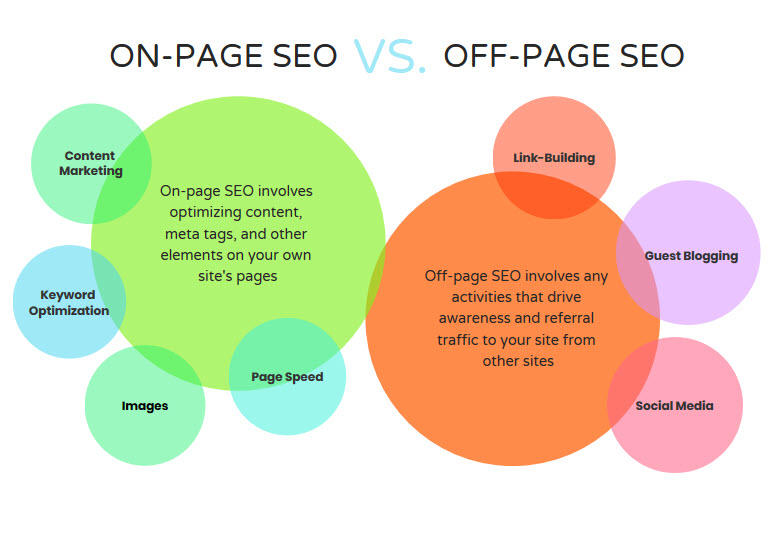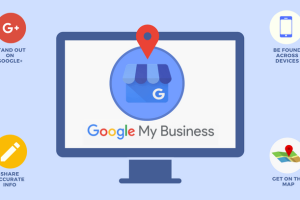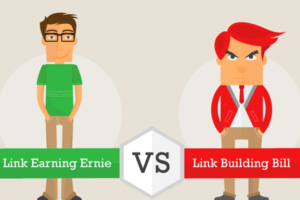Content Attributes
SEO is like flirting. The objective is to attract the attention of users and Google to show them how good we are and that they come with us to have a unique experience.
But how can we make them notice us? At the time of flirting we not only use our appearance and personality, which would be the SEO On Page, we also resort to that friend who throws us a cable to introduce ourselves and that the other person notices us, come on, what It would be the SEO Off-Page.
Like everything in this life, you have to work it out. Let me give you another example that I’m inspired today. We can be very handsome and when we open our mouths we screw it up and lose a link. That compared to the online world would be to have a very attractive and super cool website but that takes more than 5 seconds to load or that the user does not find what they are looking for and getaway.
In short, if we do not optimize the factors involved in SEO On Page and Off Page we will never have a presence in search engines and potential customers will not find us.
This post is the first in a series that we are going to dedicate specifically to web positioning. Today I will mention the differences and the main factors involved in the two types of SEO and in the coming weeks, we will go into detail on each one so that you can apply it to your online project and link to everyone who sees you.
What is SEO On Page?
SEO On-Page is also known as internal SEO and is the optimization that is done within the web page to position it in the search engines. That is all the factors that depend on us because we have access to the code and content of our website.

Key factors of SEO On Page
For Google or any search engine to index the pages of your website, you need to make it easier for the robots that are going to crawl your website to know what it is about and what are the most important pages.
You have to take into account different factors that affect SEO on-page. We will highlight the most important ones.
Keyword search
Before starting any web project, we have to decide by which keywords we want to position ourselves. Now is the time to do keyword research to see search volume and keyword competition.
When searching for keywords, it is important to keep in mind the search intention of our users. It is definitive it is them that we have to satisfy and if we do it Google will know it and will upload us on its results page.
There are 3 types of search intentions:
- Informative: the user is looking for information. For example: what to do in Madrid.
- Navigational: the user is looking for a specific website. For example amazon.
- Transactional: the user is looking to buy a product or service. For example: buy iPhone X.
Depending on the type of business we have and the content we are doing we will emphasize more on one keyword or another.
For example: in an eCommerce, we will use the transactional and navigational ones. In the blog, we will use the informative ones to attract traffic through the content and turn it into sales.
Web architecture
The structure of the website is another key factor within SEO Onpage. It is necessary to create different levels of navigation so that users and search engine spiders interpret what is the most important information.
These levels are created precisely to offer a good experience and structure of the content. From the most important that will be at the level of the home page and categories to the most specific such as subcategories or product sheets.
In this post, Abel details how to make a correct information architecture.
Label optimization
At this point, the Title and Description tags come into play. Those are the ones that display the content on the search results page or SERPs.
These tags are essential for web positioning. The title and URL must contain the keyword and the meta description must be attractive to capture the user’s attention. It must also contain the keyword or a synonym.
The CTR (impressions/clicks) depends on these elements, which is an indicator for Google of the relevance that page has for the search carried out. The more optimized these tags are and respond to the user’s search intent, the better to increase the ranking.
Optimized content creation
We come to the icing on the cake. Much is said that content is king and indeed it is.
The content is not only the blog articles, but they are also the texts of the home page, the product sheets, the images … Often, we tend to think that only the text is content but the graphic material is also. It is very important for user experience and time spent on the site.
To write a well-written content you have to use tags H1 (which is the title of the page), H2, H3 … and that contain the keywords and synonyms. The density and prominence of keywords and the use of synonyms should not be lost sight of either.
Internal links
To guide bots and facilitate web browsing, you must make use of internal links.
These links are those that point to other pages within our website. These are very necessary to indicate which are the most important pages of the business. A good interlinking strategy will not only help spiders to index our site. But also users because we will direct them where we are interested.
Page load speed
Another factor that influences internal SEO is the loading speed of the pages. When a website takes time to load, it generates a rejection for the user. That will return them to the results page to enter another website.
This detected by Google and is a sign that your website is not good enough to be in that position. Therefore we must take care of the optimization of the code. The quality of the images to be fast and create a good user experience.
We can know the loading speed of our website with the free PageSpeed tool .
When we enter our URL it gives us an assessment for the mobile and desktop version and some notes to improve the optimization.
What is SEO Off Page?
Off-page SEO, also known as external SEO, are all the factors that are “out of our reach“. That is, outside of our website and we cannot directly control it.
An example of SEO Off Page would be the links we receive from other websites that point to ours.
At this point, we see that SEO within the page and outside the page are closely related. Since if we do not have good content and a presentable page it is very difficult for other websites to link us and therefore work the SEO Off-page.
Let’s see how we can work this type of external seo.
Key factors of SEO Off Page
Before starting, to get other websites to point to our page. It is very important to have carried out a correct optimization of the SEO On Page. Therefore the two types of SEO must go hand in hand.
Although it is true, that to create a good link building strategy. That is ultimately SEO off-page, we have to take into account the following aspects.
Backlinks, inbound link profile
Not all inbound links are good. We may be falling victim to a negative SEO attack and not being aware of not monitoring backlinks.
The quality of the backlinks is essential to properly work our SEO Off-Page.
These must be natural, that is, they must not be forced into the content. That is not related to the topic you are dealing with. For this, it is important to carry them out in specialized media with the authority to transmit it to the landing page that we want to position.
A mistake that is usually made is to generate many inbound links at once and expose ourselves to a possible penalty. We always recommend having a strategy extended over time so that it is progressive and natural.
In Publisuites, you can appear in specialized media in your sector through sponsored posts. And thus work the SEO Off Page to increase the authority of your website.
Follow or Nofollow links
If we talk about links, we have to pay attention to what type of link to use in each case and when to use them. The dofollow transmits authority to us since the search engines follow it. And the nofollow brings naturalness, very important for the SEO Off-page.
You can expand the information by reading this article so you know when to use each type of link.
Anchor texts
Finally, mention the anchor texts or anchor text that is the visible text that links to our page.
It is not worth any text, a strategy must be followed so that there is a balance between different anchor texts. Do not always use the same, it varies and plays with the keywords + brand, keywords + adjectives, prepositions, with HTTP without HTTP, with www without www, etc.
This has done nothing but start
WOW! In the end, to be a text that inaugurates a series of contents to improve SEO, it has gotten out of hand.
This has only just begun. I have tried to condense the main factors of SEO On Page and SEO Off Page to delve into each one in the following posts.
In addition, we will have a specialist in the subject so that you learn to the maximum and you can apply it in your strategies.
If you liked it, can we help you move it around on social media?



